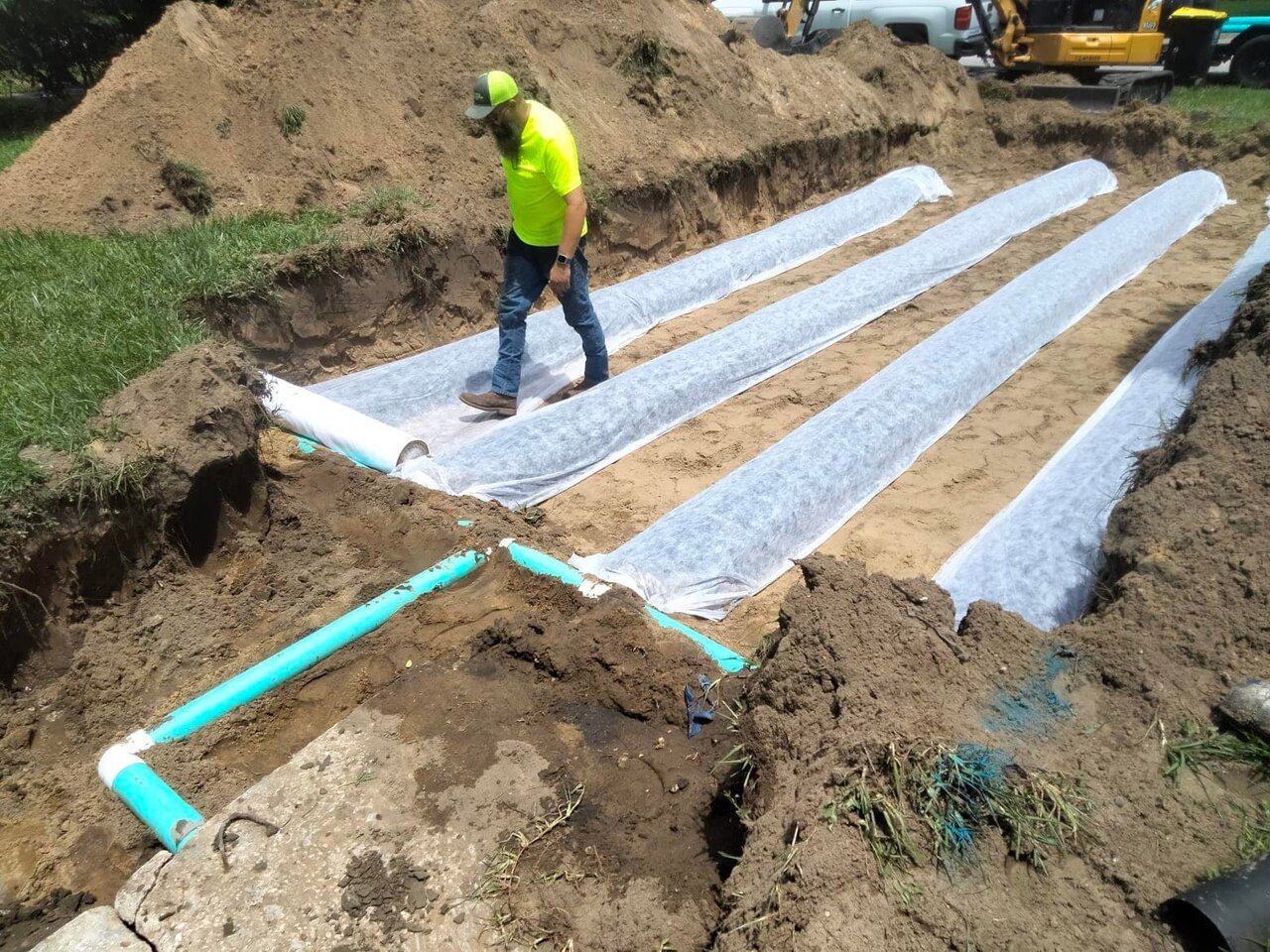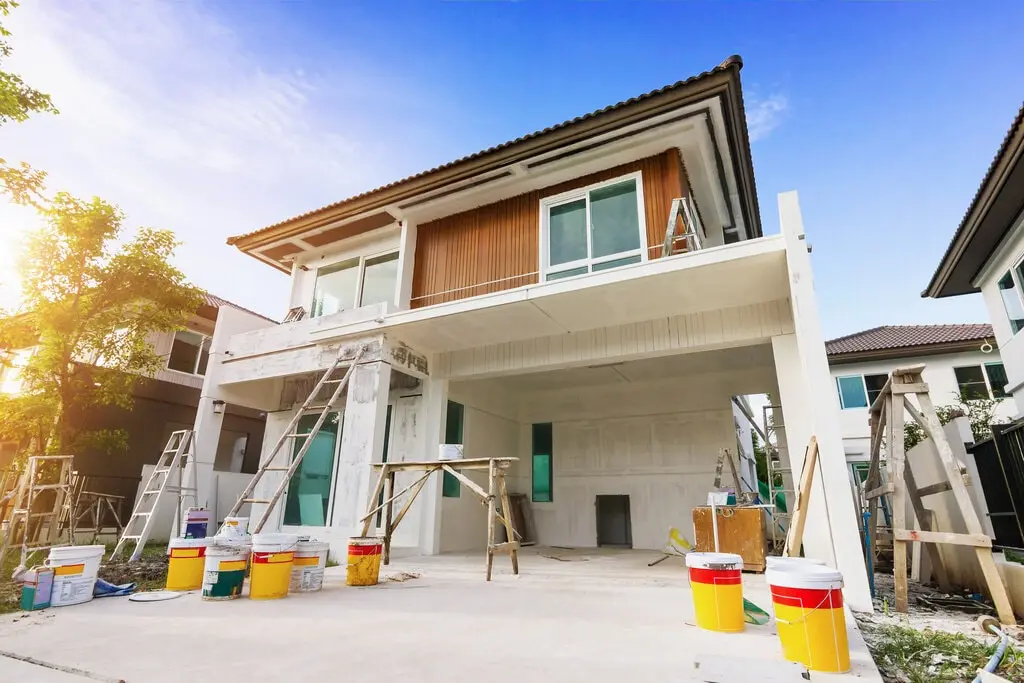Wastewater from residential properties in the United States is typically treated in one of two ways: using sewage services provided by a local municipality or via an Onsite Sewage Treatment and Disposal System (OSTDS), otherwise known as a septic system.
Septic systems were originally created to prevent wastewater from polluting nearby waterways and sources of drinking water. On-site septic system design has continued to evolve over the years, as new ways were developed that did a better job of treating potentially hazardous waste than old types of septic systems.
Septic System Types
The United States Environmental Protection Agency lists ten types of septic systems on its website:
- Septic tank
- Conventional septic system
- Chamber system
- Drip distribution system
- Aerobic treatment unit
- Mound systems
- Recirculating sand filter system
- Evapotranspiration system
- Constructed wetland system
- Cluster / community system
The best septic system design for a given residence depends on a variety of factors, including the number of people in the household, soil conditions, and the property’s size, slope, and proximity to water. State, county, and local regulations can also play a role in a septic design plan.
Here are some details about each type of septic system.
Septic Tank
Wastewater from the home flows through a pipe into a watertight tank that is buried on the property. This septic tank is the first stop in the treatment of the home’s wastewater. In the septic tank, heavier solids sink to the bottom, forming sludge, while lighter solids and grease float to the top, forming scum. The middle layer, called effluent, is discharged into a drainfield for further treatment.

Conventional Septic System
Conventional systems are used mostly in single family homes or small businesses. Effluent leaving the septic tank enters a trench of stone or gravel that has a material on top to prevent contaminants from entering the clean stone. The stone filters the effluent, which is then further treated by microbes when it reaches the soil.
Chamber Septic System
An alternative to stone / gravel systems, a chamber septic system consists of a series of interconnected chambers. Wastewater from the septic tank flows into the chambers, where it comes into contact with microbes in the soil, which treat the effluent.
Drip Distribution System
In a drip distribution system, a large dose tank is placed after the septic tank. This allows for wastewater to be delivered on a timed basis into drip tubing that is inserted into the top 6 to 12 inches of soil.
Aerobic Treatment Unit
Similar in many ways to a municipal sewage plant, aerobic systems inject oxygen into the treatment tank, which increases natural bacteria activity that provides additional treatment for nutrients in the effluent.
Mound Systems
A sand mound septic system may be used where there is not enough depth in the soil on the property to allow for a standard drainfield. The sand mound helps treat the effluent, which is then dispersed into the soil.
Recirculating Sand Filter System
Recirculating sand filter systems can be constructed above ground or below. Effluent flows from the septic tank into a pump tank, and is then pumped into the sand filter, which filters it before it is discharged to the drainfield.
Evapotranspiration System
The base of the drainfield in an evapotranspiration system is lined with a watertight material. In these systems, the effluent is never filtered to the soil, but instead evaporates. Evapotranspiration systems can only be used in arid climates with adequate heat and sunlight.
Constructed Wetland System
The system closest to a natural wetlands is called a constructed wetlands system. Effluent from the septic tank goes into a wetland cell, which is lined and filled with gravel, sand, and wetland plants that can thrive in a perpetually saturated environment. The media and plants remove pathogens from the wastewater.
Cluster / Community System
Some septic systems collect water from more than one home or building. The drainfield for all the individual septic tanks is situated nearby, allowing the wastewater from all to be treated in one place.
A septic design plan is typically done by a professional septic contractor who takes into account the property location, soil type, proximity to water sources, and the number of residents and their lifestyle. A properly designed septic system can serve the needs of a residence for many years, so it is always important to work with a septic professional who has the skill and experience required for a specific situation.
Types of Septic Tanks
Septic tanks are one of the primary components in most residential septic systems. Septic tank design for any system can be one of the largest decisions in the process of developing a septic system. Of significant importance is the type of material used for the septic tank.
Concrete septic tanks are usually precast. They are heavy and strong enough to withstand buoyant forces when placed underground. They can be expected to last for decades, and are rustproof.

Steel septic tanks are heavy, so they do not float. However, they are expensive and tend to corrode, so they are rarely recommended any longer.
Poly (plastic) septic tanks are rustproof, and their light weight makes them easier to install. Because they are lightweight, though, floating may be a problem.
Like poly tanks, fiberglass septic tanks are also light and easy to handle. Because they are reinforced with glass fibers, they are stronger than plastic tanks, but they can float or shift more easily than heavier tanks.
Choosing the right tank for the situation is critical to the functioning and lifespan of any septic system.
Septic and Drainfield Services in Central Florida
As Lakeland’s most trusted septic service company, Septic and Drainfield Depot can design and install any type of septic system. Our team of experts has years of experience, and each of our professionals receives hundreds of hours of hands-on training.
Our services include:
- Residential septic pumping
- Commercial septic pumping
- Septic tank installation
- Septic tank inspection
- Septic tank repair
- Septic tank cleaning
- Drainfield installation
- Drainfield repair
- Drainfield inspection
- Lift station installation
- Lift station maintenance
We offer secure financing, with low monthly payments and quick approval. Get a free estimate for any septic or drainfield service you need; call Septic and Drainfield Depot today.







